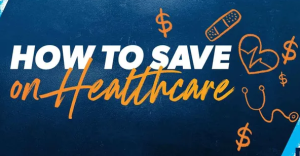Introduction
Visiting the United States opens doors to diverse experiences, but it also requires careful consideration of health protection. The U.S. healthcare system is known for its complexity and high costs, making medical insurance a crucial aspect of travel planning for visitors. In this comprehensive guide, we will take you through a step-by-step process to help you choose the best medical insurance for visitors to the USA. From understanding specific needs to evaluating key features and navigating cost factors, this guide aims to ensure that your visit is not only memorable but also medically secure.
Step 1: Understanding the Specific Needs of Visitors
a. Visitor’s Health Profile
Assess the health profile of the visitor. Consider pre-existing medical conditions, age, and any potential health risks associated with the visit. Understanding specific health needs is the foundation for selecting an appropriate insurance plan.
b. Duration of Stay
Determine the duration of the visit. Insurance needs vary for short-term tourists, long-term visitors, and those planning extended stays. Tailoring the coverage to the length of the stay ensures cost-effectiveness and optimal protection.
c. Nature of Activities
Consider the nature of planned activities during the visit. Whether it’s leisure travel, business engagements, or adventure activities, the insurance plan should align with the potential risks associated with the planned itinerary.
Step 2: Researching Insurance Providers
a. Reputable Insurance Companies
Research and identify reputable insurance companies that specialize in visitor insurance for the USA. Look for companies with positive customer reviews, strong financial stability, and a track record of reliable claims processing.
b. Types of Visitor Insurance Plans
Explore the types of visitor insurance plans offered by various providers. These may include comprehensive coverage, limited coverage for specific needs, or plans tailored for certain visitor categories, such as tourists, students, or parents visiting family members.
c. Network of Healthcare Providers
Check the network of healthcare providers associated with each insurance plan. A broad network ensures access to medical facilities, and familiarity with reputable hospitals and clinics in the USA adds an extra layer of assurance.
Step 3: Key Features to Consider in Visitor Insurance
a. Emergency Medical Coverage
Prioritize plans that offer robust emergency medical coverage. This includes coverage for hospitalization, doctor visits, emergency medical evacuation, and repatriation of remains in case of unfortunate events.
b. Coverage for Pre-Existing Conditions
If the visitor has pre-existing medical conditions, evaluate plans that provide coverage for such conditions. Be aware of waiting periods, exclusions, or additional riders related to pre-existing conditions.
c. Policy Maximum and Deductibles
Review the policy maximum and deductibles. A higher policy maximum provides more coverage, while understanding deductibles helps in assessing the out-of-pocket expenses the visitor may incur before the insurance coverage kicks in.
d. Coverage for Accidents and Illnesses
Ensure that the insurance plan provides comprehensive coverage for accidents and illnesses. This includes coverage for doctor visits, prescription medications, diagnostic tests, and other necessary medical services.
e. Repatriation of Remains
Evaluate whether the insurance plan includes repatriation of remains coverage. In the unfortunate event of a visitor’s passing, this coverage ensures that the remains are transported back to their home country.
Step 4: Understanding Factors Affecting Insurance Costs
a. Visitor’s Age
The age of the visitor is a significant factor influencing insurance costs. Older visitors may face higher premiums due to increased health risks associated with age.
b. Duration of Coverage
The duration of coverage directly impacts costs. Short-term coverage for a few weeks may be more affordable than long-term coverage extending over several months.
c. Policy Maximum and Deductibles
Higher policy maximums and lower deductibles generally result in higher premiums. Balance the desired coverage with budget considerations to find the most suitable plan.
d. Type of Coverage
The type of coverage chosen, whether it’s comprehensive coverage or limited coverage for specific needs, affects costs. Consider the specific needs of the visitor to determine the most cost-effective option.
e. Add-Ons and Optional Coverages
Evaluate optional add-ons and coverages. While they enhance protection, they may also increase costs. Assess the value of these options based on the visitor’s health profile and planned activities.
Step 5: Obtaining Insurance Quotes
a. Requesting Quotes from Multiple Providers
Contact multiple insurance providers to request quotes based on the visitor’s specific needs. Provide accurate information about the visitor’s age, duration of stay, and any pre-existing conditions.
b. Comparing Quotes and Coverage Details
Once you receive quotes, carefully compare them. Consider not only the cost but also the specific coverage details, including policy maximums, deductibles, and coverage for specific medical services.
c. Checking for Special Discounts
Inquire about any special discounts or promotions offered by insurance providers. Some providers offer discounts for extended stays, group coverage, or certain affiliations.
Step 6: Applying for Visitor Insurance
a. Completing the Application Process
Choose the preferred insurance provider and complete the application process. Provide accurate information about the visitor, including personal details, health history, and trip itinerary.
b. Reviewing Policy Terms and Conditions
Thoroughly review the policy terms and conditions before finalizing the application. Pay attention to coverage details, exclusions, and any limitations that may apply to the visitor’s specific circumstances.
c. Confirming Policy Inclusions
Ensure that the policy includes the necessary coverage for the visitor’s trip. Confirm details such as emergency medical coverage, coverage for pre-existing conditions, and any optional add-ons selected.
Step 7: Managing Visitor Insurance Policies
a. Carrying Insurance Documents
Advise the visitor to carry a copy of the insurance documents during the trip. This includes policy details, emergency contact information, and any relevant medical information.
b. Understanding Claim Procedures
Familiarize the visitor with the claim procedures outlined in the policy. Ensure that they understand the steps to follow in the event of a covered incident.
c. Contacting the Insurance Provider
In case of a covered incident, the visitor should contact the insurance provider as soon as possible. Follow the provider’s guidance on documentation and procedures to ensure a smooth claims process.
Step 8: Utilizing 24/7 Assistance Services
a. Emergency Assistance Hotline
Make the visitor aware of the emergency assistance hotline provided by the insurance company. This 24/7 service can offer guidance and support in emergencies, including medical assistance and travel-related issues.
b. Seeking Assistance in Case of Emergency
In the event of an emergency, the visitor should reach out to the assistance hotline for guidance on the nearest medical facilities, coordination of emergency medical evacuation, or other urgent assistance needs.
c. Understanding Assistance Services
Ensure that the visitor understands the range of assistance services offered. These may include medical referral services, translation services, and help in replacing lost travel documents.
Step 9: Practical Tips for a Medical-Secure Visit
a. Researching Local Healthcare Facilities
Before the trip, research healthcare facilities near the destination. Know the location of hospitals and clinics, and ensure that they are easily accessible in case of medical emergencies.
b. Staying Informed about Local Medical Practices
Be aware of local medical practices and cultural norms related to healthcare. This knowledge can help the visitor navigate the local healthcare system more effectively.
c. Keeping Emergency Contacts Handy
Besides the insurance provider’s contact information, advise the visitor to keep a list of emergency contacts, including local contacts at the destination and contacts back home.
Step 10: Planning for Future Visits
a. Learning from the Visit Experience
After the visit, reflect on the insurance experience. Consider what worked well and areas for improvement. Apply these insights to future visits and adjust coverage as needed.
b. Regularly Reviewing Coverage Needs
As the visitor’s travel patterns and health needs evolve, regularly review insurance coverage requirements. Adjust insurance plans to align with changing dynamics and ensure continued optimal protection.
c. Sharing the Experience with Others
Share the insurance experience with fellow travelers. Recommendations based on personal experiences can guide others in making informed decisions when choosing medical insurance for their visit to the USA.
Conclusion
Choosing the best medical insurance for visitors to the USA is not just a formality; it’s a crucial step in ensuring a safe and secure visit. By following this step-by-step guide, you can navigate the complexities of visitor insurance with confidence. May your visit be filled with joy, exploration, and the assurance that health protection is firmly in place. Safe travels!



